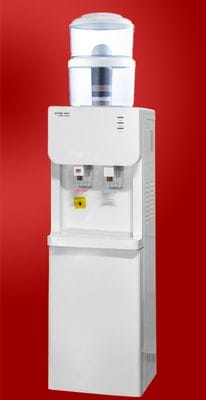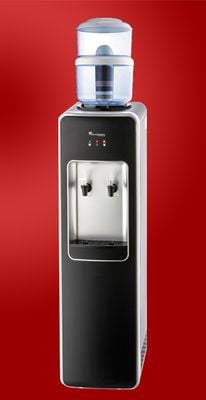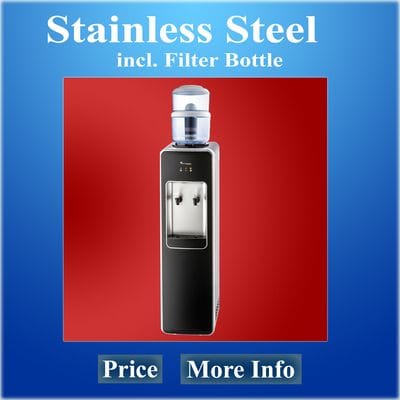Water Cooler Mudgee
Great tasting water made from your own tap with Prestige Water Cooler Mudgee
 Benchtop Water Dispenser Mudgee:
Benchtop Water Dispenser Mudgee: ![]()
 Floor Standing Water Dispenser Mudgee:
Floor Standing Water Dispenser Mudgee: ![]()
 Exclusive Water Dispenser Mudgee:
Exclusive Water Dispenser Mudgee: ![]()
Lemon water: Acid or alkaline
Actually, I should drink more water - Useful tips. Lemon water is said to be healthy and to help fight diseases. It is particularly popular in the alternative health world because it would have an alkalizing effect. Healthy water after the 8-stage filter from your water cooler Mudgee. Lemon juice, however, has unquestionably a low pH and should therefore be considered as acid and not as alkaline. This article examines why some people regard lemon juice as alkaline, despite the acidic pH. It also discusses what it does in the body.
What is pH?
When we talk about acid versus alkaline or alkaline food, it is important to understand what pH means. Put simply, the pH is a value that indicates how acidic or basic a solution is, on a scale of 0-14. A pH of 7 is considered neutral. A value below 7 is considered acid and a value above 7 is basic. On the pH scale, the difference between two consecutive numbers represents a tenfold difference in acidity. For example, a pH of 5 is ten times as acidic as a pH of 6 and 100 times as acidic as a pH of 7. Because there is a large amount of citric acid, lemons have an acid pH. According to FDA (the American Food and Consumer Product Safety Authority), the pH of lemon juice is between 2 and 3 (1, 2). That makes lemon juice 10,000 to 100,000 times more acid than water. Water with minerals is better than just tap water.
In short: The pH of a foodstuff indicates its acidity. The pH of lemon juice is between 2 and 3, which means that it is acidic.
The assumed benefits of alkalizing food
The alkaline diet has gained popularity in recent years. It is based on the principle that the food you eat can change the pH of your body. To rectify this immediately: there is no evidence that this is correct. According to research, what you eat has very little effect on the pH of your blood.
Nevertheless, food according to the alkaline diet is divided into three groups:
- Acid-forming food: Meat, poultry, fish, dairy, eggs and alcohol.
- Neutral diet: Natural fats, starches and sugars.
- Alkalizing food: Fruit, nuts, legumes and vegetables.
Supporters believe that eating large amounts of acid-forming food can make the pH in your body lower (so more acidic), which will increase your susceptibility to illness. For example, many believe that the body steals alkaline calcium from your bones to compensate for the acidifying effects of the food you eat. Alkaline and healthy filtered water from your water cooler Mudgee. Some also believe that cancer can only grow in an acidic environment and that you can prevent it or even cure it by limiting acid-forming foods and eating more basic nutrition. How many drinks does a child need?
In short: Some people think that alkalizing food increases the pH of the body, promoting health and preventing disease.
Why lemon juice is seen as alkalizing despite the acidic pH?
Whether food has an acidifying or alkalizing effect on the body has little to do with the pH of the food before it is digested. Alkaline drink water from your water cooler Mudgee. It depends on whether acidic or alkaline by-products are produced after your food has been digested and processed by the body. A method by which it can be estimated which type of by-product will produce certain food is known as the technique of 'as-analysis'. Foods are burned in a laboratory to mimic what happens during digestion. The pH of the ash is used to classify the feed as acid or alkaline. This analysis is the reason why food is sometimes said to produce acidic or alkaline 'ash' (3). But axis analysis is not a precise determination, so today scientists prefer to use a different formula that classifies nutrition based on the potential renal acid load (PRAL) or the possible burden of acid-forming food for the kidneys. The PRAL of food is the amount of acid that is thought to reach the kidneys after the food has been digested (4, 5, 6). Tips for summer. Normally the kidneys keep the pH of the blood constant, by draining excess acidic or basic elements through the urine. Acid nutrients such as proteins, phosphorus and sulphur increase the amount of acid that the kidneys have to filter out. Meat and grains, which often contain these nutrients, therefore receive a positive PRAL score (6). Fruit and vegetables, on the other hand, contain many alkaline nutrients such as potassium, calcium and magnesium. Great tasting water made from your own tap from the water cooler Mudgee. These ultimately ensure that the amount of acid that the kidneys need to filter out becomes less and therefore receives a negative PRAL score (6). Like other fruit, lemon juice produces basic by-products after it has been converted. Therefore, it has a negative PRAL score and this is why lemon juice is seen by some as alkaline, despite having an acidic pH before it is digested.
Prestige Water Cooler Mudgee, Water Dispenser Mudgee, Water Filter Mudgee
Mudgee, Gulgong, Rylstone, Kandos, Bylong, Ilford.





